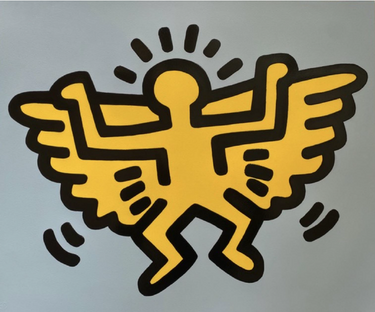Keith Haring is one of the top names in the Pop Art and Graffiti scene. His energetic line drawings and public murals are characterised by figures and radiant babies.
If you’re looking to buy Keith Haring art, you’re in the right place. Whether you’re looking for an affordable lithograph or a limited edition Keith Haring print, Grove Gallery has you covered. Prices start at just £190.








